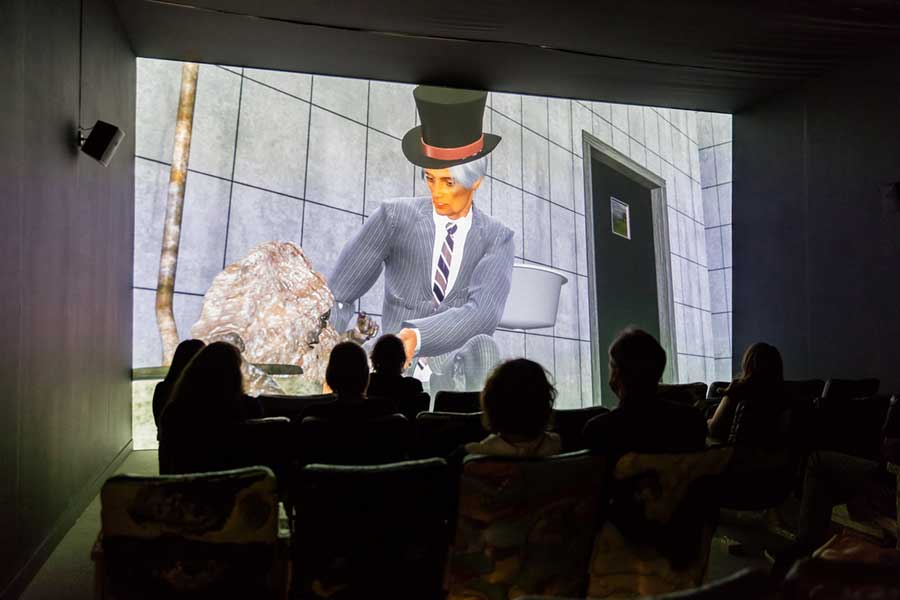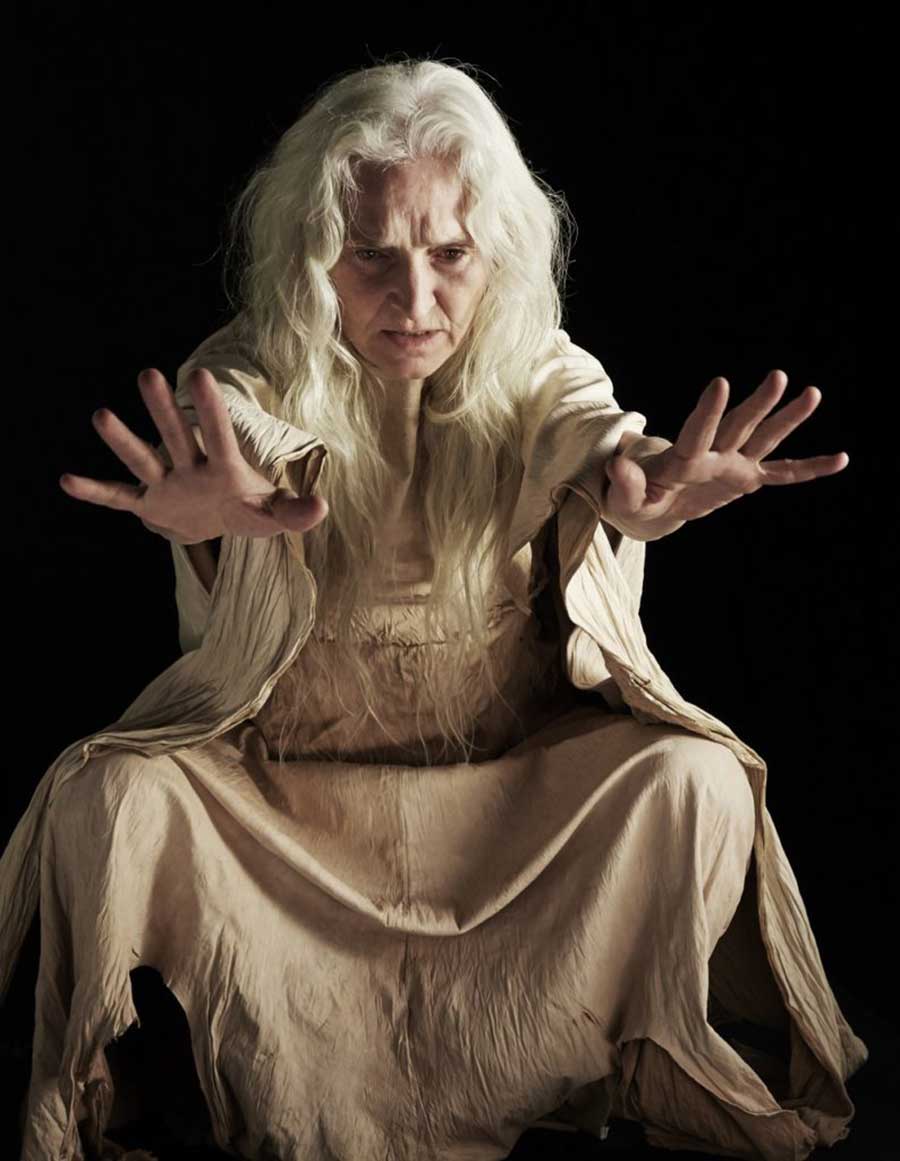Frieze Projects New York’s Cecilia Alemani: ‘I Want To Let the Space Shine’
The Director & Chief Curator of High Line Art talks about curating at Frieze and the 2017 Venice Biennale
The Director & Chief Curator of High Line Art talks about curating at Frieze and the 2017 Venice Biennale

Frieze.com Not every iteration of the Frieze New York Project have a theme, but this year they, do. What can you tell us about this?
Cecilia Alemani This year I was inspired by one of the favourite activities at the fair - watching art, and watching people watching art. That is, this relationship between the act of looking and being looked at, or watching and being watched. The artists I selected deal with this dynamic between these two poles, you could say, of exhibitionism and voyeurism. So Jon Rafman has created a cinema within the fair where you can watch a fantasy video entitled ‘Dream Journal’ - it’s an act of exposure. Elaine Cameron-Weir’s sculpture uses the form of a Second World War bomb shelter as a structure for her sculpture, but its filled with very still water, which provides an eerie reflection for the viewer looking in. Then there’s Dora Budor’s act of “cinematic doubling” which brings a kind of filmic quality to the programme - with movie doubles stalking the fair in character, and drawing many looks too. Then of course there's the first day of our Tribute to Il Teatro delle Mostre, which features Giosetta Fioroni's La Spia Ottica, which is all about watching...

Frieze.com Did this theme guide your selection of this year’s artists - do you usually decide an interest and look for artists who can speak for it?
CA It's usually the other way around: I talk to artists I am interested to work with, and through conversations with them a theme arises. The space of the fair is very important to the commissions - the ideas arise naturally from the artist’s relationship with the space.
Frieze.com As a literal space, structure, Frieze New York is not a usual exhibition space. What are the challenges and advantages of commissioning in this context?
CA The main challenge is the timeline - artists work for about 10 months on a project, and then the fair is over in four days! And your work is over. It can be bittersweet. For a long time, the setting is really “fictional” - in that, for most of the time we work on the project, the setting isn’t even there - you can’t even do a site visit to the fair because for most of the year there is no fair! But the best thing is that the work is put before an audience - so many art professionals come to the fair that for the artists they have a very concentrated platform. That balances it out.

Frieze.com Are there any Projects which especially stand out for you from the past, or which have been especially important to the artists involved?
CA One of my favourites was Liz Glynn from 2013. She made this secret speakeasy, hidden in the grid of the fair. It was very easy to pass by without noticing - you got access by being given a key and then had to knock at a plain door - inspired of course by the illegal bars of the 1920s, under Prohibition. Inside, you got a drink, but you were also told a story, with props, by the bartenders. So this brought a lot of things which I hope to achieve with the program - it really engaged the specific architecture of the fair, not just re-using a booth but really thinking the format. It was a participatory space, too, in a complicated way, and it involved storytelling. So that was very dear to my curatorial practice. And Liz has gone from strength to strength - she just opened a really wonderful public project with Public Art Fund, working with bronze in a Rodin tradition but to create a kind of Rococo ballroom in Central Park.
Another great one was Al’s Grand Hotel, the Tribute project in 2014. We managed to get people sleeping at Frieze overnight - that was a quite an achievement!

Frieze.com What can you tell us about the Italian Pavilion which you are curating for the Venice Biennale?
CA The Italian pavilion opens this week and brings Giorgio Andreotta Calò, Adeltia Husni-Bey and Roberto Cuoghi together. They are all artists more of less from my generation, born in the late 1970s or early 80s. This is a big departure from previous Italian pavillions which are usually more intergenerational surveys, with a less focussed selection of artists. The theme is this idea of Il Mondo Magico - literally, "the magic world" - which is the title of a book by Ernesto De Martino from 1948. He was a philosopher and religious ethnographer, and explored the tradition of magic in rituals and mythologies. Martino looked at magic not as a tool for irrationality, but as a tool for reconstructing the world at a moment of crisis. So the Pavillion looks at moments of magic or imagination - artists who look at the world keenly, but not a documentary eye which we might expect for a period of emergency. All will create a new work, in relation to the space of the pavilion - a bit like at the fair, the relationship to the space is important. Did you know the Italian is the biggest pavilion in Venice? I want to let to let the space shine. In the past it’s been crowded over, but it’s actually really really beautiful.
Frieze.com Were you led to De Martino by a sense of impending crisis, then - is that relevance?
CA We are absolutely in a moment of crisis, and you will no doubt see that across the Biennale. Interestingly, I think there are other instances of the theme of the exhibition, this magical theme - looks back at the artist as the person who creates the world. The tradition almost of the artist as shaman. The Irish Pavillion, for example, will show work by Jesse Jones which proposes a “witching” of legal systems.

Frieze.com Did you intend for your pavilion to resonate in this way, or did you discover other complimentary instances later?
CA Oh it was pure coincidence! But this is the beauty of it an event like the Biennale: it can’t be coordinated from above, so it’s up to the visitors to create analogies and narratives, many of which we maybe not actually sought after by the organisers.
Frieze.com There are lots of artists from biennials at the fair this year. People often say there are too many biennials, and too many fairs. What’s your view on the interaction between them?
CA They are different animals. I don’t see so much overlap. In both cases there is a need to refresh the format, to find new moods and new trends, but that’s the DNA of any kind of institution that has been around for decades - which both the biennial model and the art fair have. At Frieze New York, we are seeing much more 20th century modern art, and it’s a wonderful compliment to the contemporary practice. You see interactions between artists who didn’t have anything “real” to do with each other. You can see something similar with Biennials, where there are more and more historical figures - the the so called “overlooked artists’. But it’s not one copying the other - it’s necessary responses to the need for change.

Frieze.com Giorgio Andreotta Calò made a piece for Frieze Sounds with you at the 2016 edition of the fair. Is it often that work with an artist at the fair and then within another context, or vice-versa?
CA This is very much the case. Actually Dora Budor in this year’s programme has a wonderful sculpture on the High Line [Alemani is Director of High Line Art], as has Jon Rafman. They’re both up there this week. There is something of the laboratory about being able to make work at Frieze, there are fewer institutional bindings. That sense of experiment is the beauty for the artists too — Dora has not really done performances before, so this is a testing ground for her. But yes in another way, all the work I do is about creating relationships with artists. And with viewers. Showing work at the High Line is a longer duration, a different audience, but there and they are both exercises with creating relationships with an audience.
Frieze.com What will you do when the fair is over?
CA I’m going to go to Venice! Literally I’m going straight from the fair to Venice to finish the Pavilion.
Frieze.com And when will you get to relax?
CA Well, then there’s Documenta. So not until after that. Then we go to Portugal and eat clams all day.























